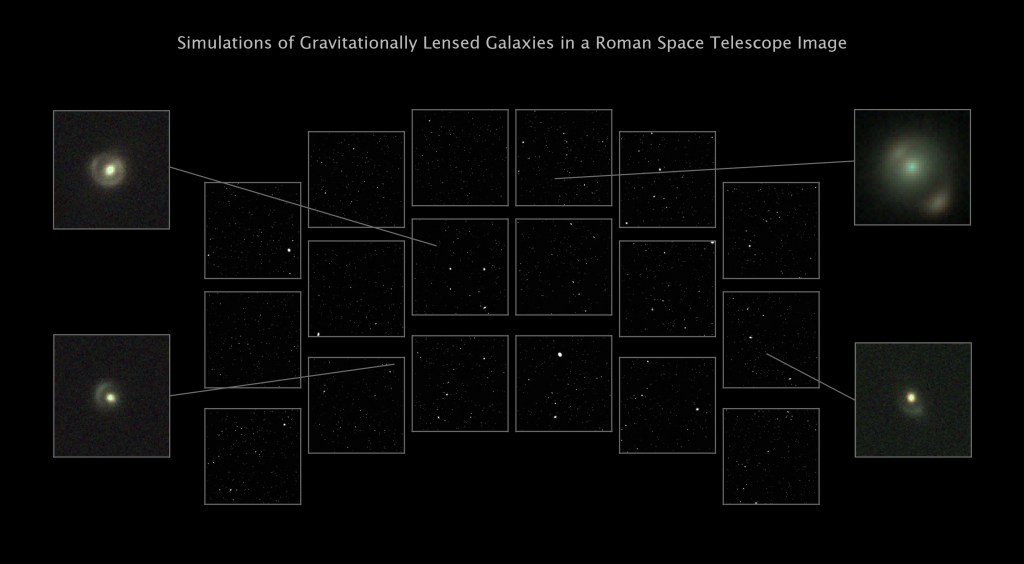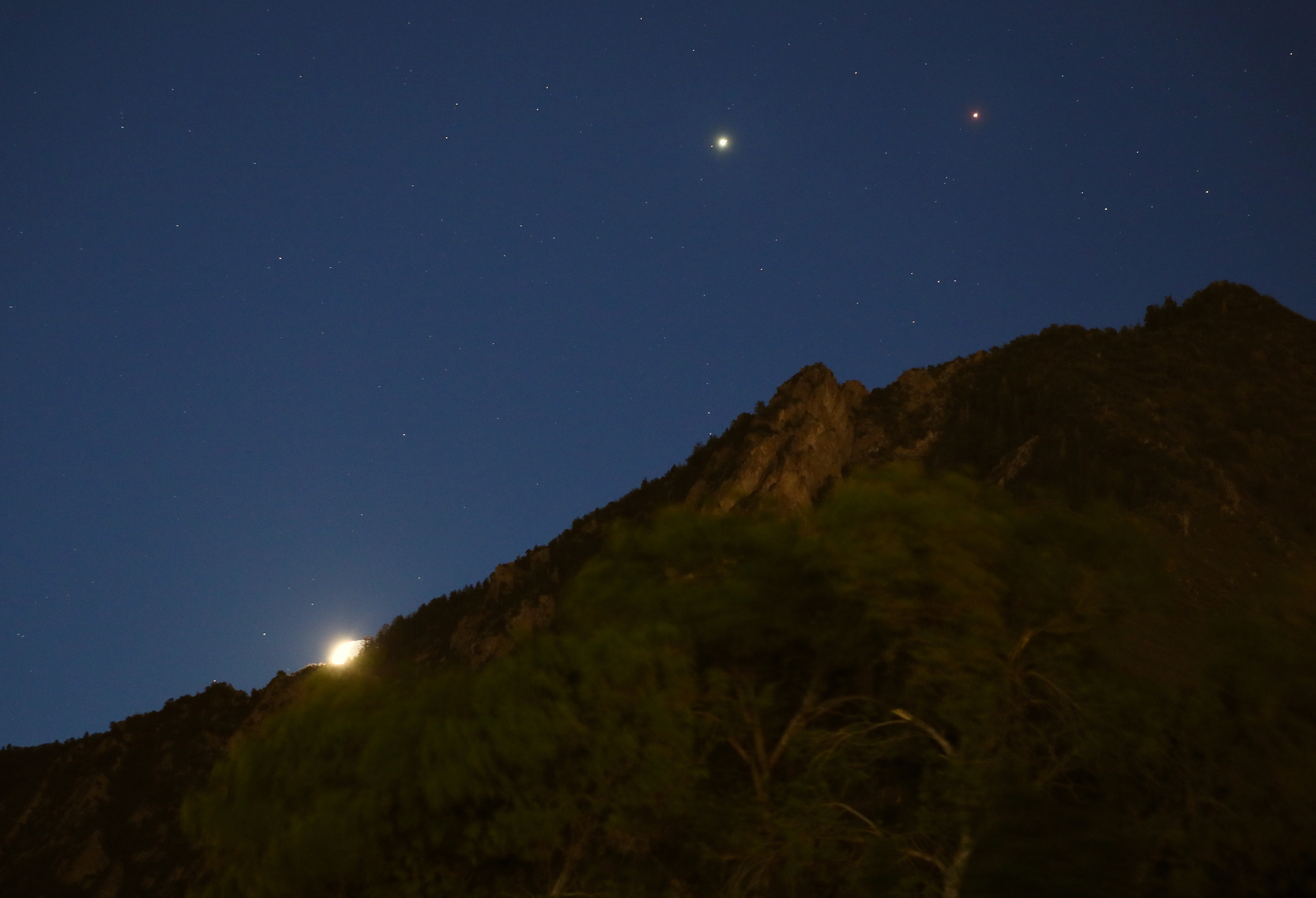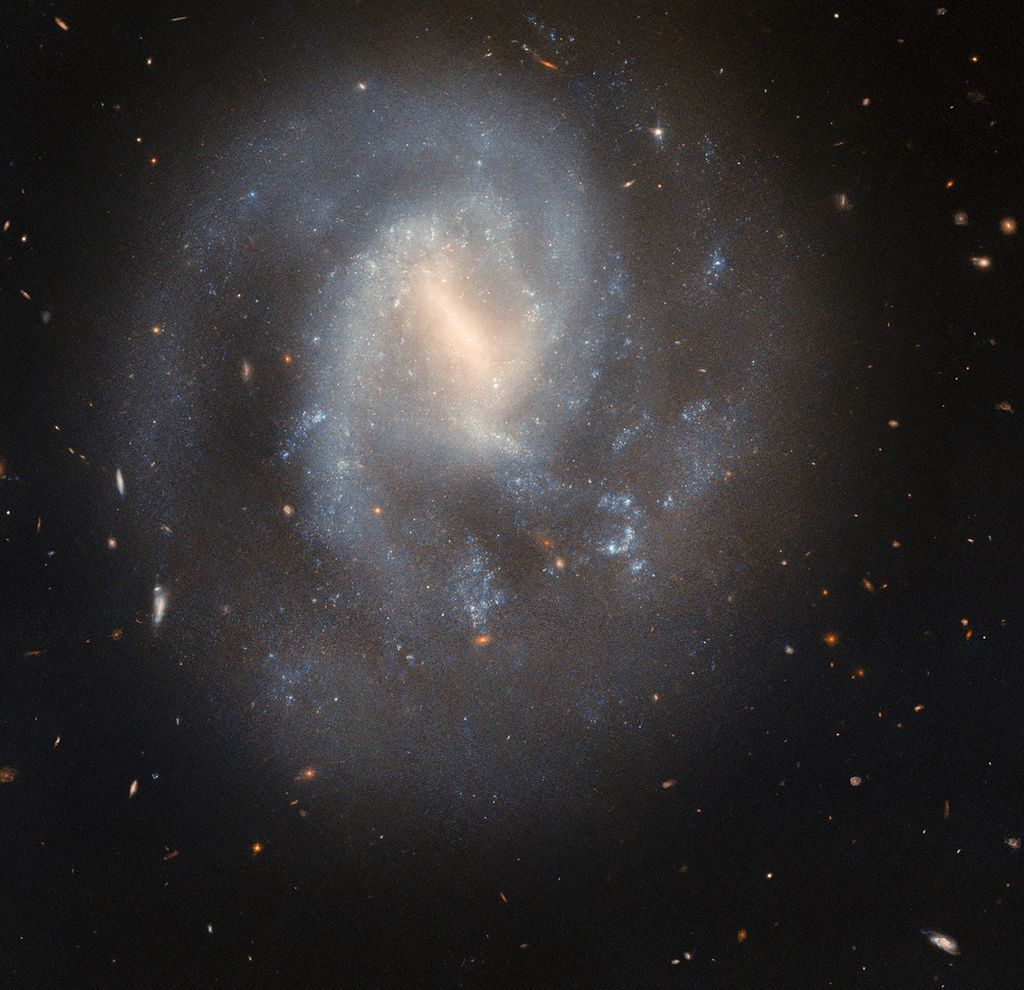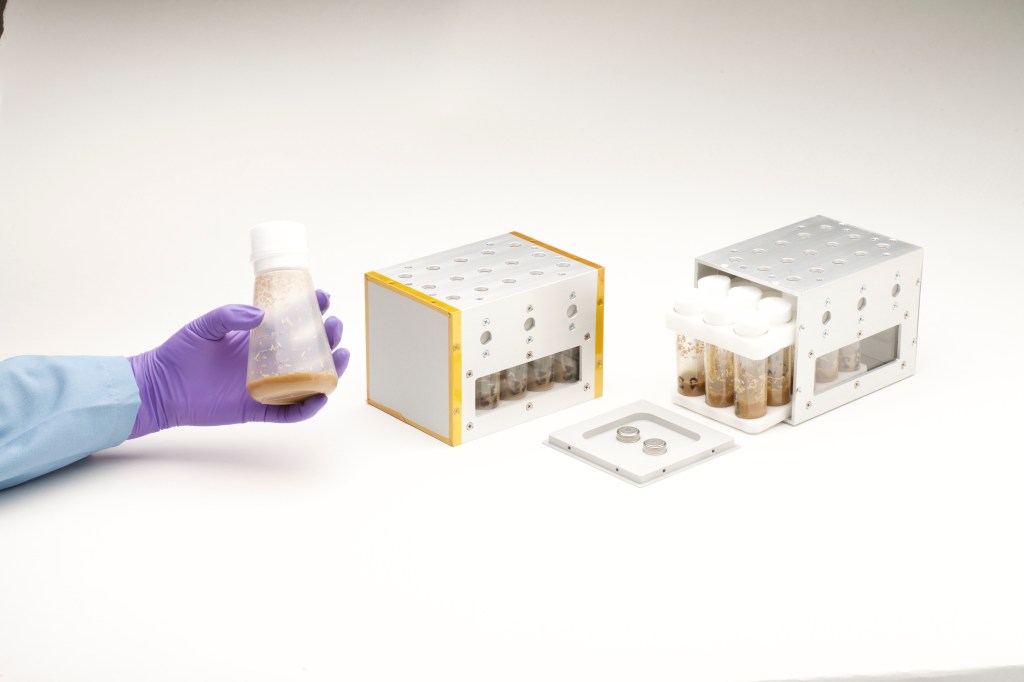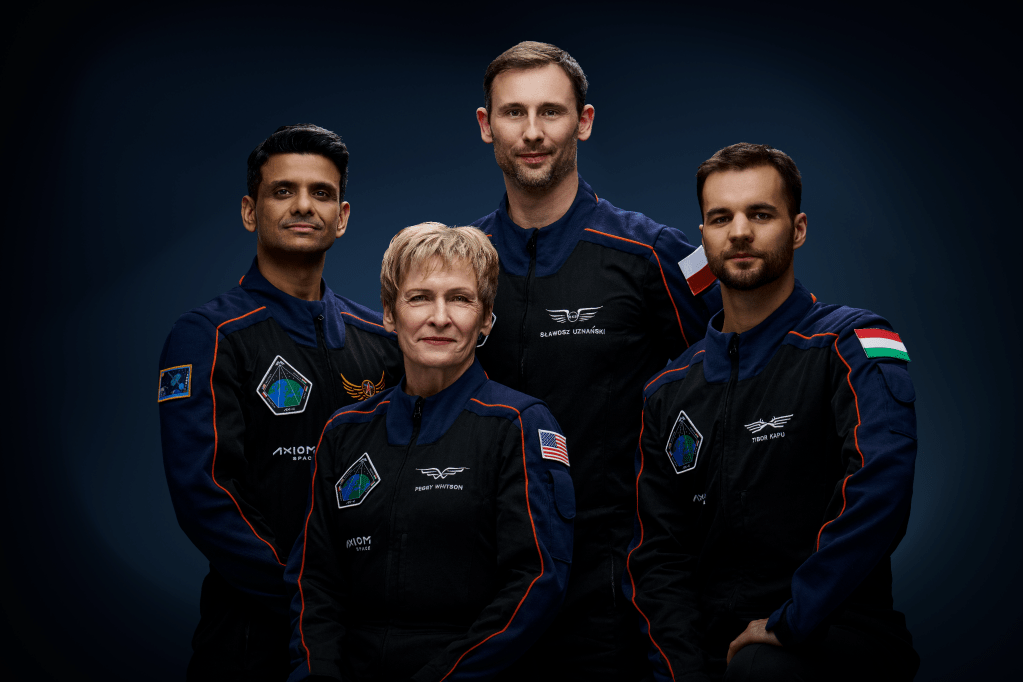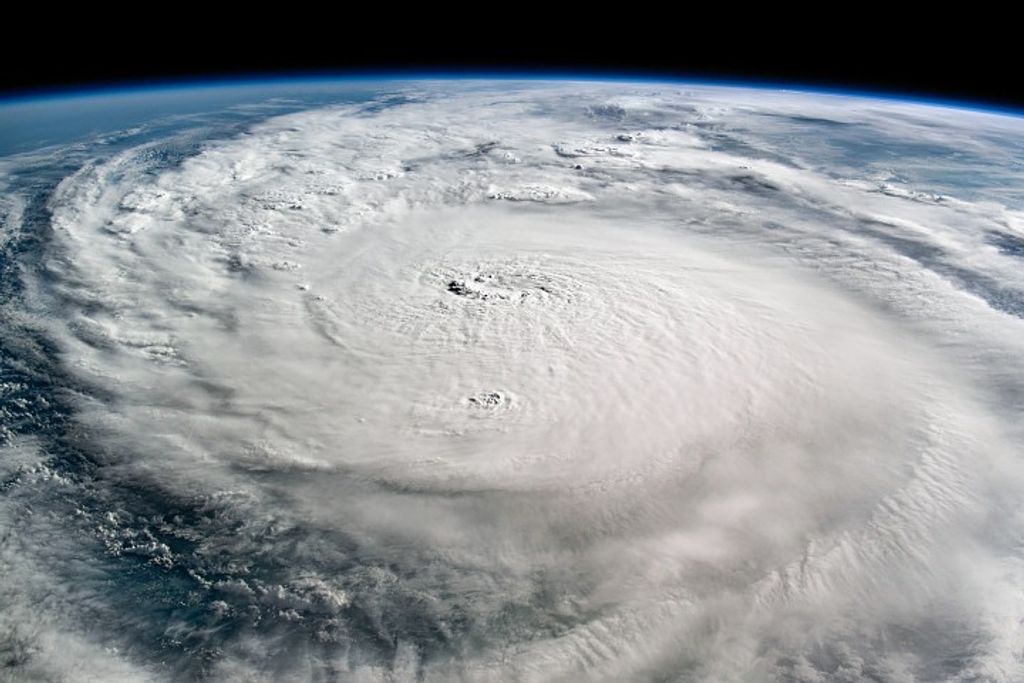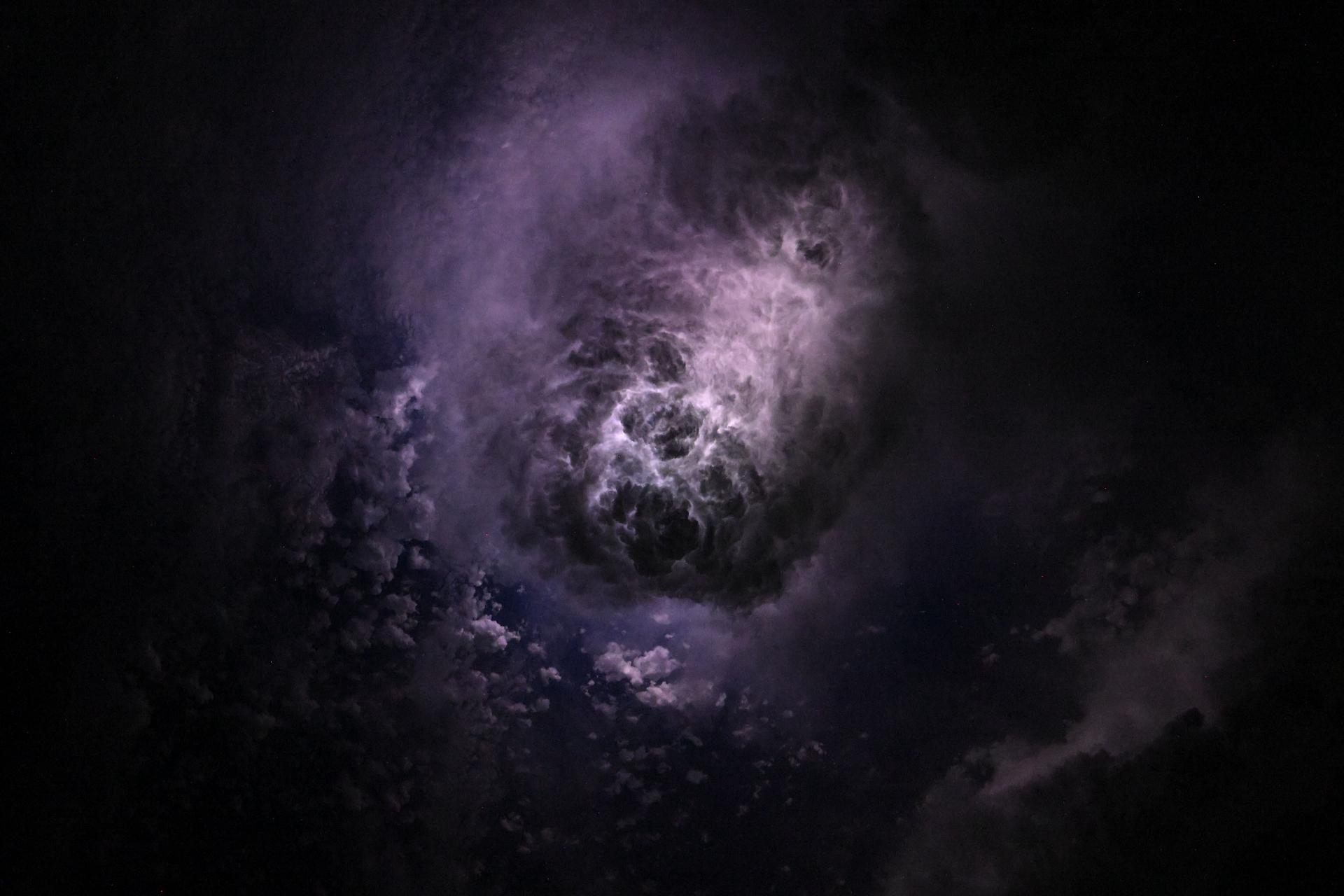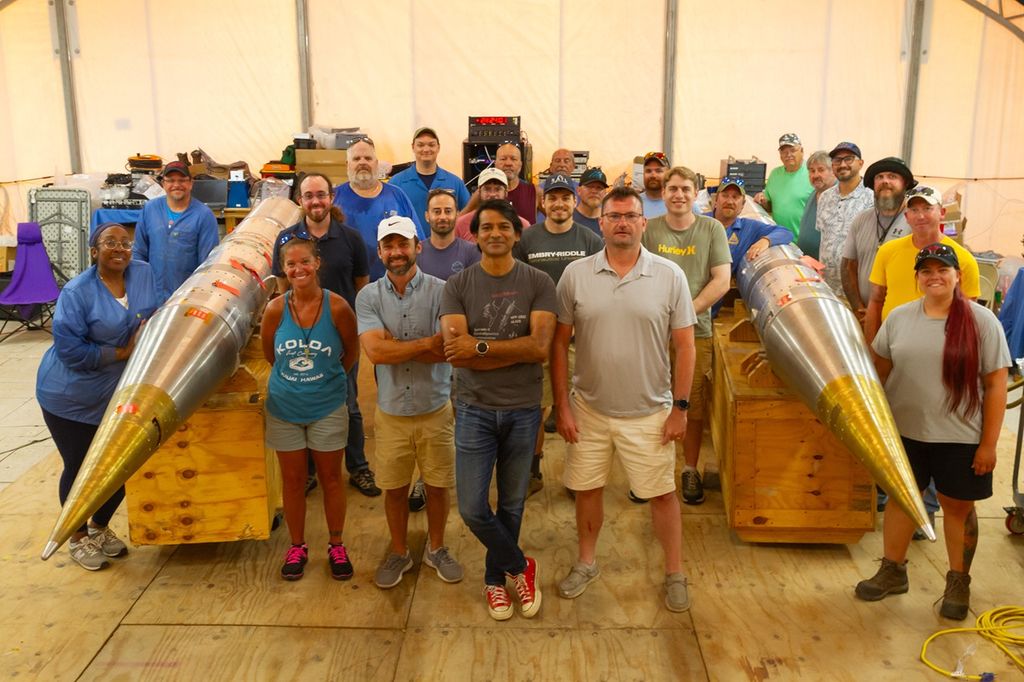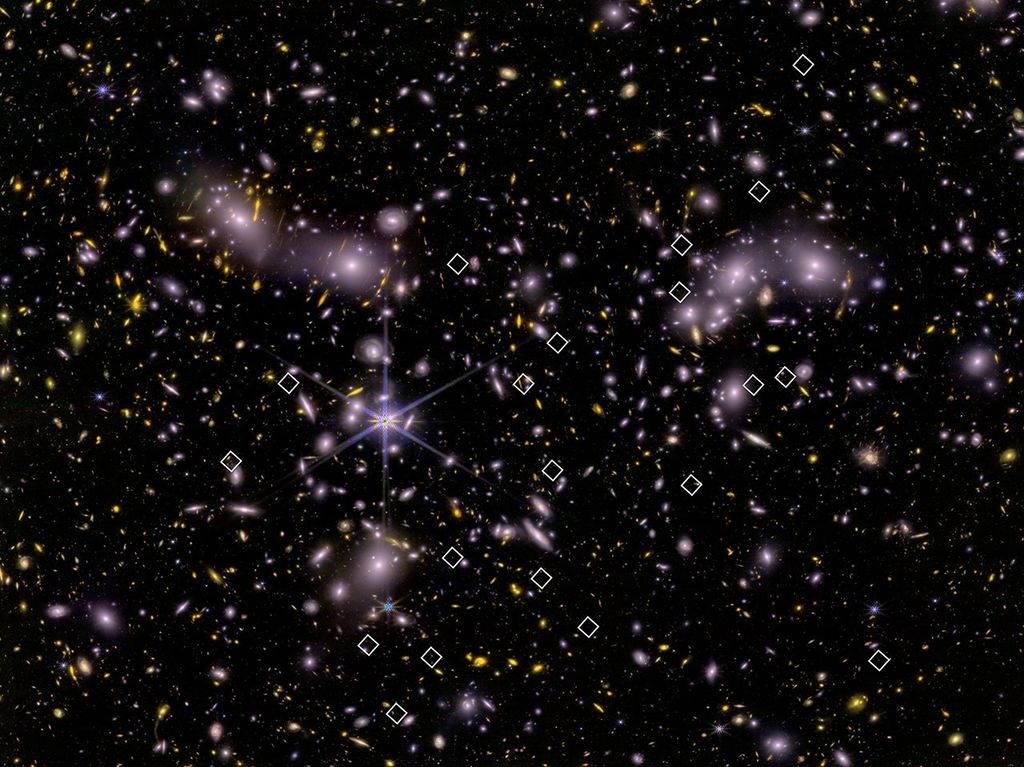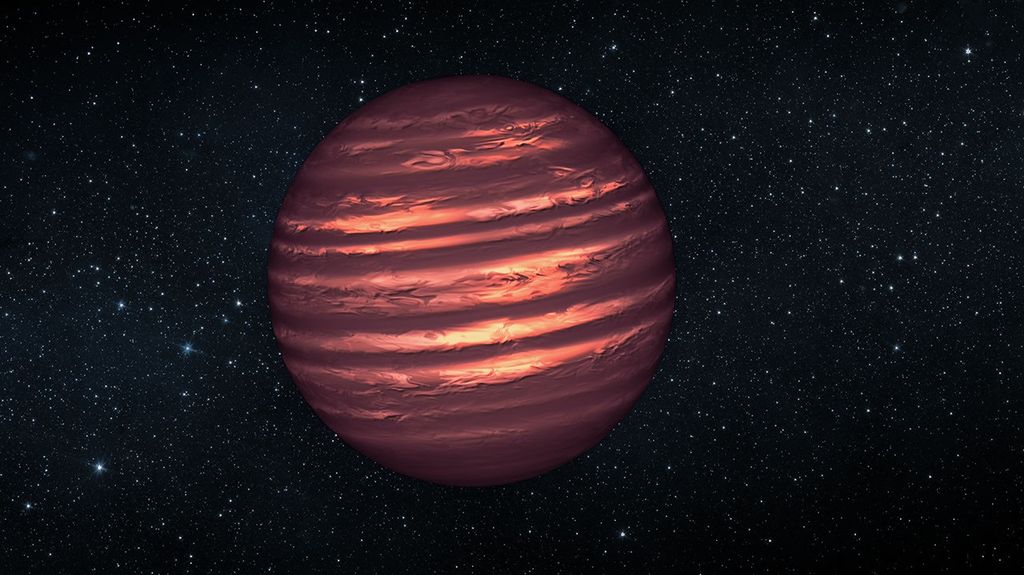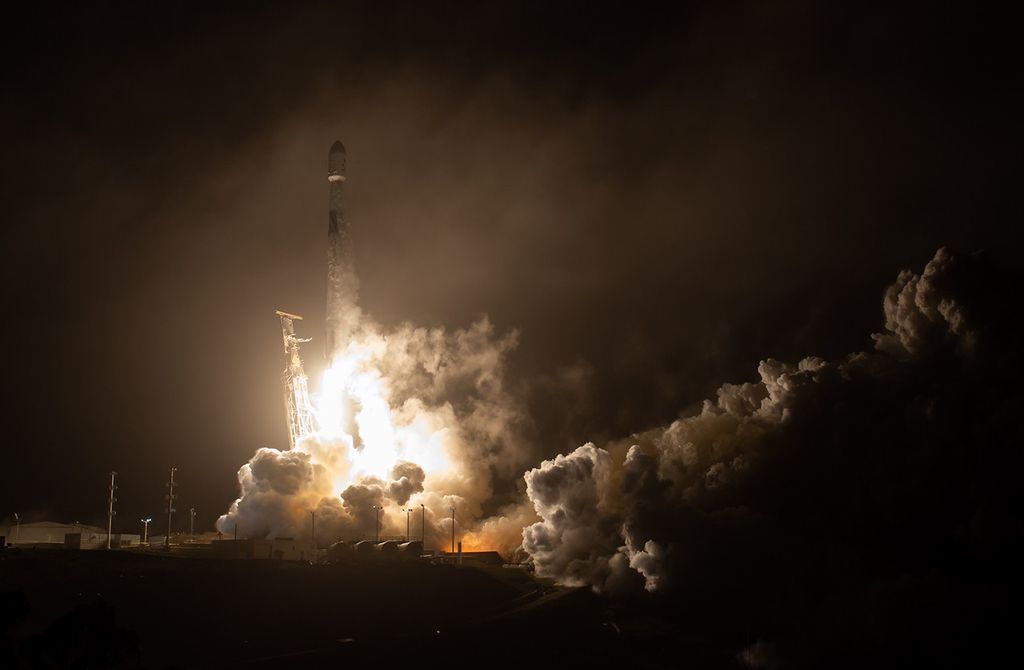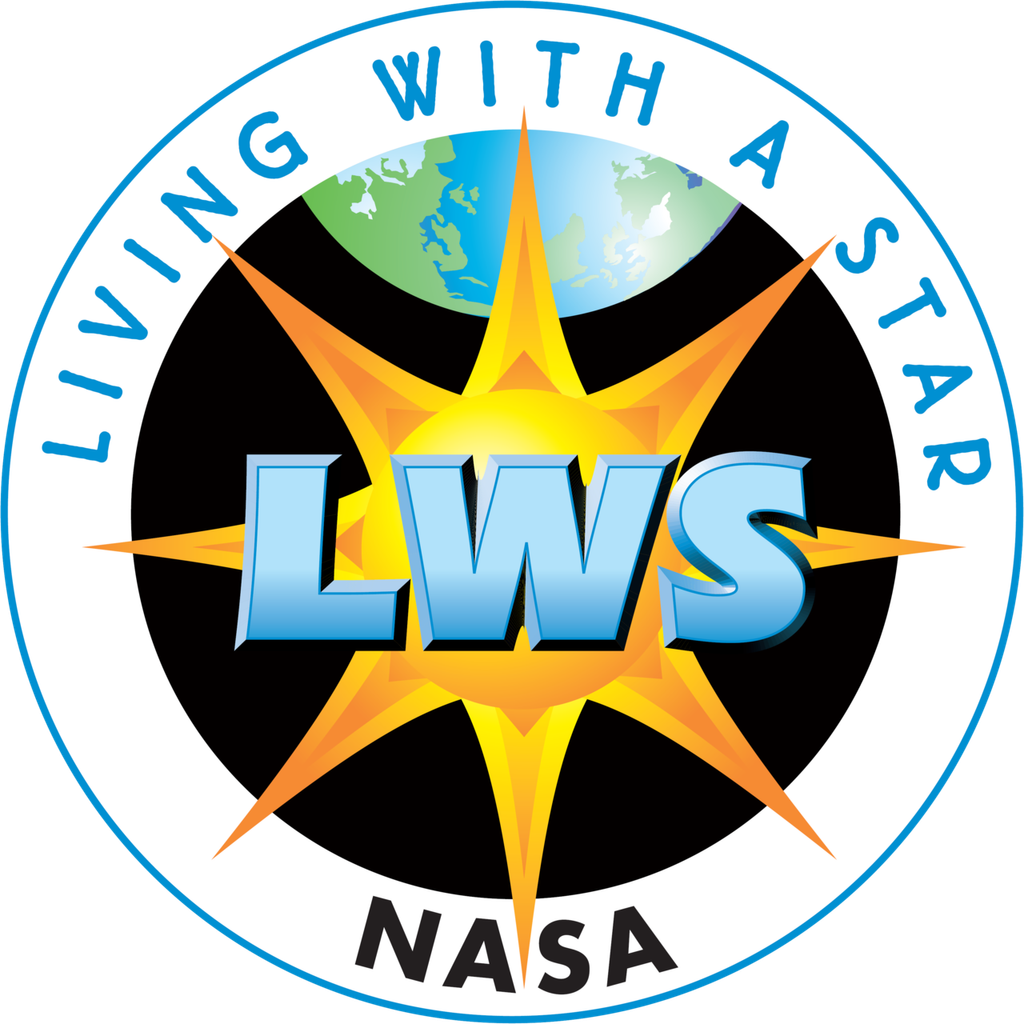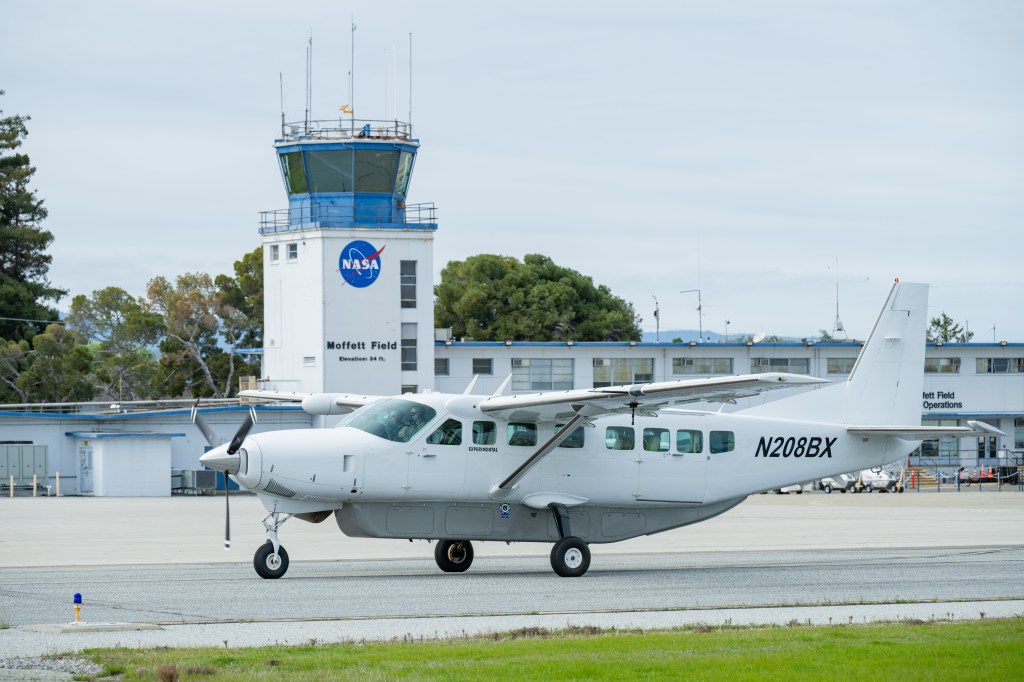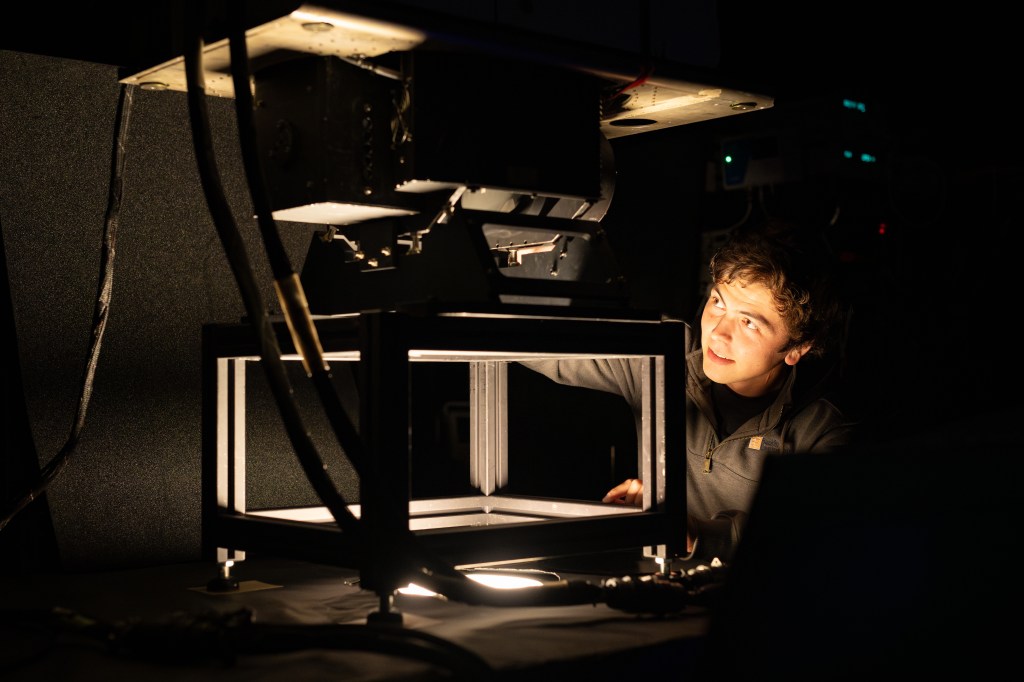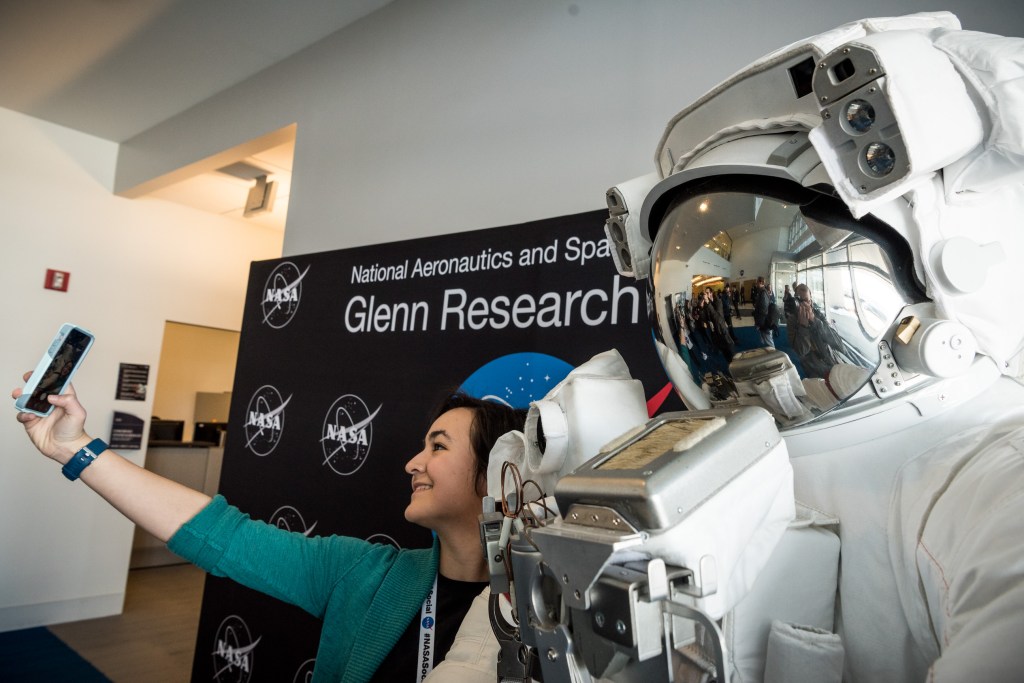1 min read
Hubble’s Visible and Infrared Views of Nearby Galaxies Yield Clues to Early Universe

NASA's Hubble Space Telescope snapped these two views of the heart of the galaxy M82. The image at left was taken in visible light; the picture at right, in infrared light. In the infrared view, the telescope's Near Infrared Camera and Multi-Object Spectrometer peered through thick dust lanes to find some of the galaxy's more than 100 super star clusters. The clusters are the larger pink and yellow dots scattered throughout the picture. They were formed during a violent collision with the galaxy M81 about 600 million years ago. The galaxy is 12 million light-years from Earth in the constellation Ursa Major. The pictures were taken Sept. 15, 1997.
About the Object
- R.A. PositionR.A. PositionRight ascension – analogous to longitude – is one component of an object's position.09h 55m 52.18s
- Dec. PositionDec. PositionDeclination – analogous to latitude – is one component of an object's position.69° 40' 48.79"
- ConstellationConstellationOne of 88 recognized regions of the celestial sphere in which the object appears.Ursa Major
- DistanceDistanceThe physical distance from Earth to the astronomical object. Distances within our solar system are usually measured in Astronomical Units (AU). Distances between stars are usually measured in light-years. Interstellar distances can also be measured in parsecs.About 3.6 Mpc (12 million light-years)
- DimensionsDimensionsThe physical size of the object or the apparent angle it subtends on the sky.The visible portion of the HST M82 image is ~210 arcseconds (3.7 kpc) along the diagonal.
About the Data
- Data DescriptionData DescriptionProposal: A description of the observations, their scientific justification, and the links to the data available in the science archive.
Science Team: The astronomers who planned the observations and analyzed the data. "PI" refers to the Principal Investigator.The release image of M82 was created from WFPC2 archived HST data from the following science Proposals: 7446 (WFPC2/NICMOS observations): R. O'Connell (Univ. Virginia). Principal Astronomers: R. de Grijs (Inst. of Astronomy, Cambridge, UK), R. O'Connell (Univ. Virginia), J. Gallagher (Univ. Wisc-Madison), D. Hunter (Lowell Obs.) 6826: P. Shopbell (Cal Tech). Principal Astronomers: P. Shopbell (Cal Tech), R. Dufour (Rice Univ.), J. Cohen (Cal Tech), J. Bland-Hawthorn (AAO) - InstrumentInstrumentThe science instrument used to produce the data.HST>WFPC2 (left), HST>NICMOS (right)
- Exposure DatesExposure DatesThe date(s) that the telescope made its observations and the total exposure time.March 16, 1997; September 15, 1997; August 28, 1998, Exposure Time: 8.7 hours
- FiltersFiltersThe camera filters that were used in the science observations.Prop 7446 (WFPC2): F814W (I), F555W (V), F439W (B) Prop 7446 (NICMOS): F110W, F160W Prop 6826 (WFPC2): F656N (Ha)
- Object NameObject NameA name or catalog number that astronomers use to identify an astronomical object.M82, NGC 3034
- Object DescriptionObject DescriptionThe type of astronomical object.Irregular Galaxy
- Release DateMarch 7, 2001
- Science ReleaseHubble Spies Huge Clusters of Stars Formed by Ancient Encounter
- Credit
Related Images & Videos

Violent Star Formation in Heart of Starburst Galaxy M82
This stunningly beautiful image [right] taken with the NASA Hubble Space Telescope shows the heart of the prototypical starburst galaxy M82. The ongoing violent star formation due to an ancient encounter with its large galactic neighbor, M81, gives this galaxy its disturbed...
Share
Details
Last Updated
Mar 28, 2025
Contact
Media
Claire Andreoli
NASA’s Goddard Space Flight Center
Greenbelt, Maryland
claire.andreoli@nasa.gov


